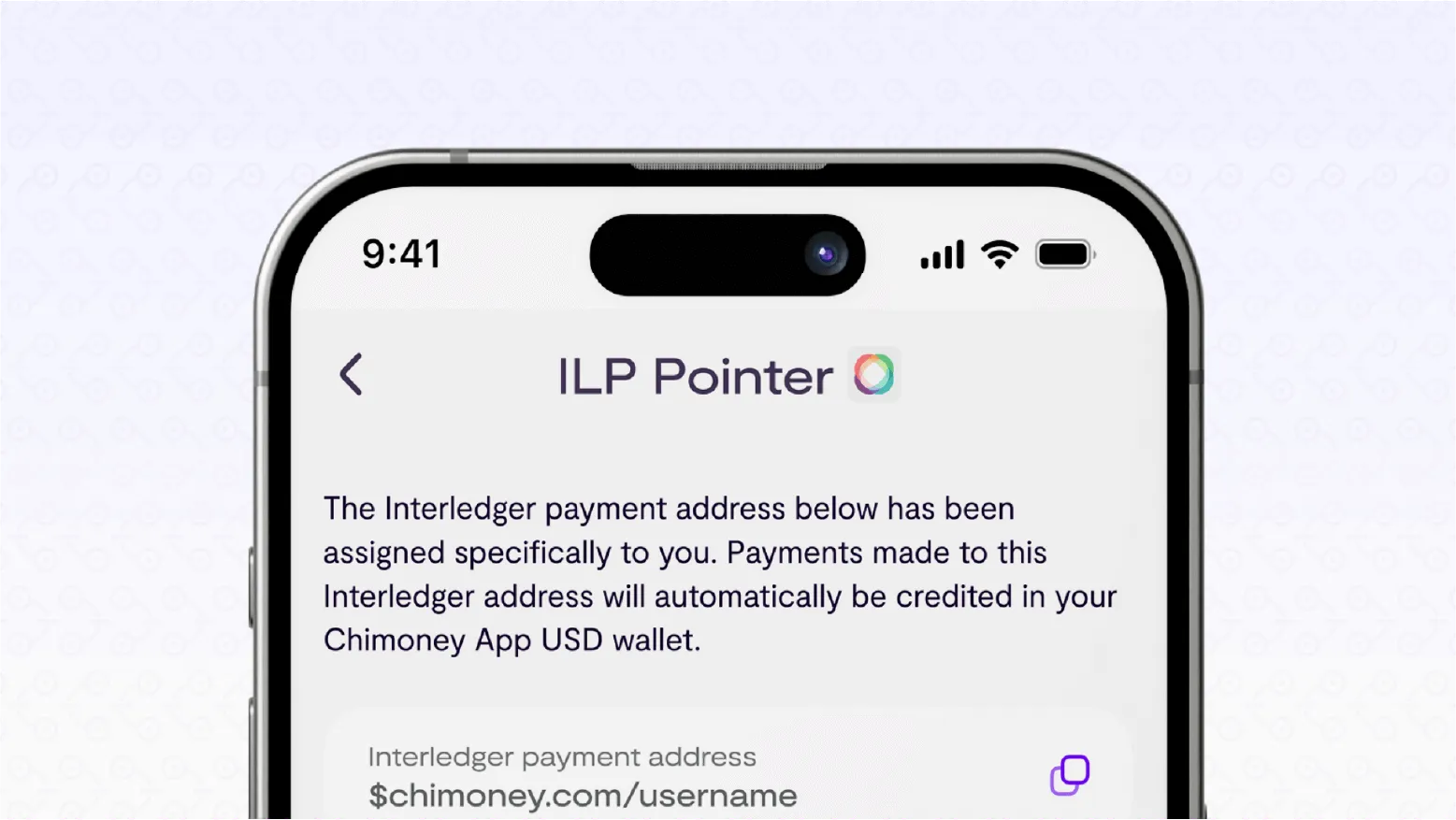Building the Future of Cross-Border Remittances with Chimoney and Interledger
This blog was written in partnership with Chimoney
Cross-border remittances remains one of fintech's most persistent challenges as traditional payment infrastructure creates unnecessary friction in building truly global applications.
Chimoney and Interledger partnered in an effort to solve the three main challenges faced in cross-border transfers; high cost, slow processing and lack of transparency. Let's dive into how the integration of Chimoney with Interledger Protocol (ILP) solves these challenges.
Understanding the Cross-Border Challenge
The technical complexities of cross-border payments extend far beyond simple currency conversion. Each region has its own payment rails, compliance requirements, and preferred payment methods. Building direct integrations with each system is impractical for most development teams, yet using traditional banking rails means accepting high fees and slow settlement times.
The Power of Chimoney + ILP Integration
What makes the Chimoney-ILP combination particularly powerful is how it abstracts complexities while maintaining flexibility. Through a single integration with Chimoney's API, developers can access services like P2P wallet transfers, powered by the Interledger Protocol (ILP) and enabled through payment pointers.
The technical implementation leverages ILP's packet switching for value transfer, similar to how the internet routes data packets. By integrating Interledger’s open payments API, Rafiki, Chimoney enables the issuing of payment pointers and the transfer of value from one payment pointer to another without the traditional complexities associated with cross-network transactions, such as intermediary fees or delays.
Core Technical Capabilities

From an implementation standpoint, you get:
- Payment pointers for simplified addressing (think email addresses for payments)
- Transfer of value between payment pointers.
Real Use Cases
Integrating Chimoney’s Interledger Protocol (ILP) enabled solutions opens up numerous possibilities across various sectors. Here, we will explore two detailed use cases: building a freelance marketplace and creating an emergency aid distribution system for NGOs.
Use Case 1: Freelance Marketplace
Chimoney's API can significantly streamline payment processes in a freelance marketplace. Here’s a step-by-step breakdown of how this integration works:
Step 1: Multi-Currency Wallet Setup
Create Wallets: Set up Chimoney multi-currency wallets (USD, CAD, NGN) for both freelancers and payers. This allows transactions in various currencies, accommodating users from different regions.
Step 2: Issue Payment Pointers
Generate Payment Pointers: Create unique payment pointers for both the freelancer and the payer. These pointers serve as simplified addresses for sending and receiving payments, similar to email addresses.
Step 3: Payment Flow
Task Completion: Once the freelancer completes a task, they notify the payer that the work is done.
Initiate Payment: The payer sends payment directly to the freelancer’s wallet by transferring funds from their own payment pointer to the freelancer’s payment pointer.
Use Case 2: Emergency Aid Distribution System for NGOs
Another application of Chimoney's ILP integration is in the development of an emergency aid distribution system for non-governmental organizations (NGOs).
Here’s how it can be structured:
Step 1: Multi-Currency Wallet Creation
Set Up Separate Wallets: Create distinct multi-currency wallets for different aid programs within the NGO. This organization helps track funds allocated to various initiatives.
Step 2: Issue Payment Pointers
Generate Payment Pointers for Beneficiaries and the Organization: Both the organization and each beneficiary are assigned unique payment pointers linked to their respective wallet accounts. These payment pointers allow for easy identification and tracking of aid distribution.
Step 3: Instant Value Transfer
Disbursement of Funds: When aid is ready to be distributed, the NGO can instantly transfer value from its program-specific wallets to the beneficiaries' wallets using their respective payment pointers.
Chimoney App Case Study
The Chimoney App, powered by the Interledger Protocol (ILP), is transforming peer-to-peer payments for Canadians by eliminating the need for traditional banking intermediaries. When users create an account, they are assigned a unique Interledger Payment Pointer, which acts as a simplified identifier for direct money transfers.
The ILP integration ensures secure and compliant transactions while simplifying the payment process with its interoperable infrastructure.
To discover more about the Chimoney App and its features, click here.
Future Developments
An exciting upcoming development is Chimoney’s integration of Web Monetization, which, still building on the foundation of the Interledger Protocol (ILP) , transforms the way value is transferred online allowing websites and applications to stream payments in real time.
Leveraging this technology, Chimoney aims to make monetization more accessible, seamless, and inclusive for creators, developers, and businesses globally.
Through the integration of Web Monetization with Chimoney, users can:
- Earn Micro-Payments in Real Time: Websites and platforms can stream payments directly to creators via Chimoney Payment Pointers, bypassing the need for traditional ad-based revenue models.
- Enable Inclusive and Global Monetization: With Chimoney’s multi-currency wallets and global reach, value can be transferred across borders efficiently, breaking down geographical and financial barriers.
- Enhance Engagement and Transparency: By rewarding users instantly for actions like engaging with content, completing tasks, or contributing to open-source projects, Chimoney enables a frictionless, privacy-respecting monetization model.
Conclusion
The combination of Chimoney and ILP represents a significant step forward in making cross-border value transfer accessible to companies and developers alike.
Ready to start implementing? Check out the Chimoney API documentation. The future of cross-border payments is being built one integration at a time.